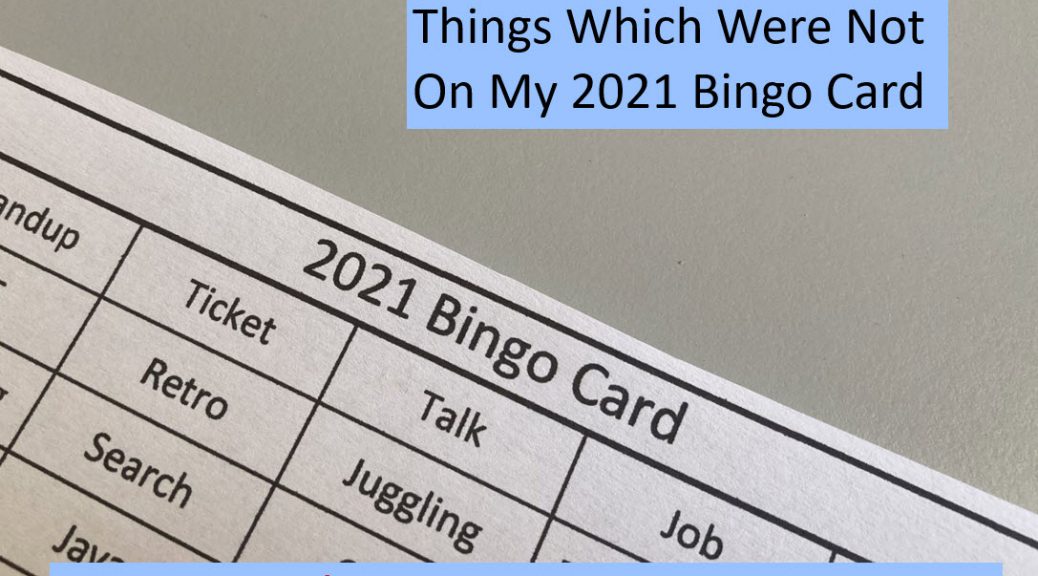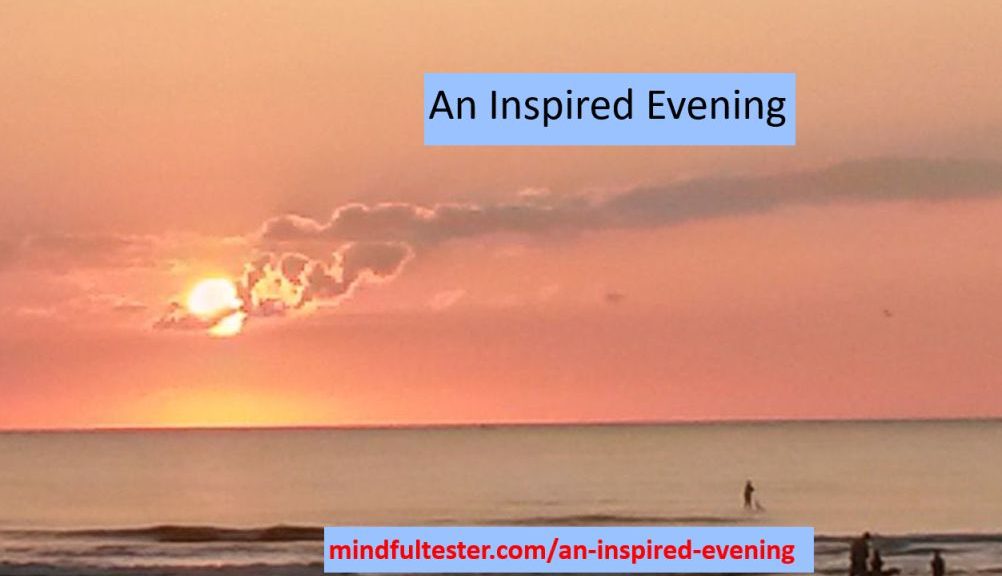- In spring I wrote my first in depth security blog post about XML injection. This was a challenge to write for people with no knowledge about XML and SQL injection.
- This year I wrote an accessibility blog post, which drew more visitors than the previous security blog post. Accessibility rules
- For the first time I got to Diamond Tier level 3 in MTG Arena.
- I like Exploratory Testing, but sometimes it is useful to have a script in place.
- For the first time I appeared in a podcast. It was about accessibility. Please have a listen.
- Also for the first time, I was in a promotion video for a conference, Diversity on a conference is a lot more than “Look, everyone can send a proposal”. I am the guy using Dutch Sign Language.
- With a lot of help I programmed a shortcut on my iPhone. I can use Siri to execute this shortcut.
For the people who like programming the language is understandable. For the people using test automation it is a bit strange to add wait commands.
- This year I used NVDA, a screen reader, to check whether my blog is accessible for people with visual disabilities.
- My most amazing discovery is, that VoiceOver has a rotor. VoiceOver is written as voice with capital V, immediately followed by over with capital O.
VoiceOver is a screen reader for the iPhone, which helps people with bad sight to use the phone. The rotor is a button which appears while turning 2 or 3 fingertips on the screen.
- This year I was a frequent participant of CoffeeOps London. The main focus is on DevOps. Among other subjects were communication, metrics, and testing. It was and is a safe environment.
- I earned a Respected badge on The Club of Ministry of Testing. At the moment of this blog, I was one of 19.
- HTML is used for websites. If it is properly used, then it makes a website more accessible. In April I received mails for free after signing up for 30 days of HTML.
- In the past I could be really upset by errors in my blogs posts. This year I was able to shrug them off.
- On the first day of this year, I got feedback about my blog post about the Agile Manifesto. It was a nice comment from one of the people who signed it.
Category Archives: AgiLe
An Inspired Evening
Every company has its own way to engage with his users. Some years ago, my team members and I spent an evening with the users.
The invitation
One day I received a mail asking for volunteers. It was for a special session. I was curious, so I asked the other testers about it.
“The backlog contains a lot of tickets. So, once in a while user representatives will choose items they want to be solved.”
It was difficult for me to imagine how things would evolve. The other tester continued with: “The programmers will program the solution on that very evening.”
There was no need for extensive documentation and discussion. It was about asking and making it work. Because this sounded agile to me, I volunteered as a tester.
The preparation
In the following weeks the team for the session slowly began to form. There were 3 programmers. An analyst also joined. People with different skill sets were on board.
Welcome in the club.
The selection of the tickets was a balancing act. On one hand a ticket should add real value to the users. On the other hand, it should not take too much time to solve it. The outcome of the session would be a set of solved tickets, which annoyed the users for a long time.
As expected, the users sent a big list to the product owner. In turn he sent the tickets to the programmers. Another selection took place.
During the days before the session, I heard the words “Too big” in different volumes. I interpreted “Too big” in a normal tone as “Solving this ticket will cost a big deal of the session.”. A shouted “Too big” sounded to me like “We need more than 1 session.”.
The meal
The evening started with a meal. Users recognised some developers. There was some small talk.
The session
After the meal we moved to a room with a big table for the laptops. On one wall a big screen was attached.
The problem
The first Jira ticket was shown on a big screen. This was not the application they were looking for. I noticed that the users were disturbed. Imagine your problem described in an unfamiliar form. It was a wall of text. This was not a good start.
A user representative also saw the confused look on the faces of her colleagues and started to talk. Everyone started to look at her instead of that screen with all that text.
She started with “You know that window with …”. People began to nod, while she continued to describe the window and the functions. “Now the problem is, that …”, she continued. Annoyance could be felt, when she described the details.
Then she told: “It would be great, if …” followed by a solution. Her peers showed appreciation for the proposal. She ended with: “Other things to take into account, are …” followed by domain knowledge and their way of working.
She told a first-hand user story. Nothing was lost in translation. There is no shorter path to a user than the shortcut I just described.
The clarification
The single male programmer stepped forward: “I take this one.”
“Can you plug me in?”, he asked. Someone connected his laptop to the big screen. The users saw a familiar window. This was the application they were looking for.
The programmer continued: “So you want the buttons on this window?” Users nodded their heads. The mouse pointer moved to two different locations: “I can place a button here. And here. It will look similar like …”
“this screen”. The programmer was now showing another window on the big screen. “Here are the buttons placed on similar locations.” This sounded good enough for the users.
The laptop of the programmer was disconnected and the next Jira ticket was shown.
The queue
This time the user representative scanned the text in a few seconds and started to talk about the problem, a possible solution, and other relevant information.
Then the first female programmer asked the second female programmer: “Shall I take this one?”
“Yes”
Another round of questions and answers followed. Then she started to program.
Rinse and repeat
Then it was the turn of the user representative and the second female programmer to repeat all the steps for the next Jira ticket.
The wait
It was silent in the room. Three programmers were ticking on their laptops. The other people were quiet.
Once in a while a programmer would ask some questions:
“You wanted to order things.”
A nod followed.
“Is the order ascending?”
“Yes, that would be handy.”
And the silence started again.
The demo
After a while the male programmer said: “I want to show something.” His laptop was connected to the big screen. “On the window I added the buttons.”, while pointing them with the mouse pointer.
“If I do this, …”, he pushed a button, “then this happens.” He told how the buttons interacted with the window.
The 6 users started to ask questions. Some of them were answered by a small demonstration of the application. This was the fix they were looking for.
The business analyst and I were also looking from other perspectives:
- What is the consequence of the shown information?
- What happens, if …?
After all the questions were answered, the programmer was available for the next ticket.
The stack
During the evening the stack of tickets slowly decreased. Three different user stories were taken care of at the same time.
The closing
Towards the end of the session the tickets were chosen were with more care: could it be fixed before the end of the session?
I think I can make it.
At the end there was a positive buzz in the air. An evening of working after a complete workday had tired the participants of the session. Afterwards people talked a little before going home.
The follow up
It was a productive evening. The programmers had solved some annoying problems for the users. These were the fixes they were looking for.
The programmers had worked in a development environment, so the fixes were not available on the workplace of the users the next day. The code had to be merged with the code for the next release. Then standard tests and regression test had to be executed by the testers.
The context
It is tempting to compare Jira tickets with low hanging fruit. Is it interesting to invite 6 users for a few hours in an evening to see a development team picking 1 apple?
Strawberries are hanging lower than apples: are 100 strawberries more worthwhile than 100 apples? There are also different strawberries: are green strawberries more worthwhile than red strawberries?
In this company the time to fix the ticket and the value of the ticket were used for the selection of the tickets. These factors might be different for another company.
Later I shared this experience with different companies, but it was not applicable.
Your mileage may vary.
House Rules For Rules
A few years ago my wife asked me to attach some tubes to the wall. I noticed that there was little room for a wrench. So I used a ratchet wrench as shown in the picture.
There is an unwritten rule to use a wrench for a nut and a bolt.
There is no rule for the type of wrench.
Proof in the pudding
In the kitchen one of my kids was stirring in a pan:
“30 seconds should be enough, but I think it is not enough.”
I stopped with my actions:
“Is that not long?”
“Last time it went all right.”
I tried to remember the taste, the structure, and the smell of the dish. But I had only positive thoughts.
I remarked:
“First you follow the rules. Then you must change them.”
“Must?” was the reaction.
“I mean: if you think it will make things better.”
“Your boss will not be happy.”, my kid remarked.
“If you stick to the rules, then you will not become better than your teacher.
Otherwise everything will remain the same.
Not all experiments will go right, so you need some room.
My boss is also experimenting:
“I have this product.”
Customers will give feedback:
“We would like to have another product.””


